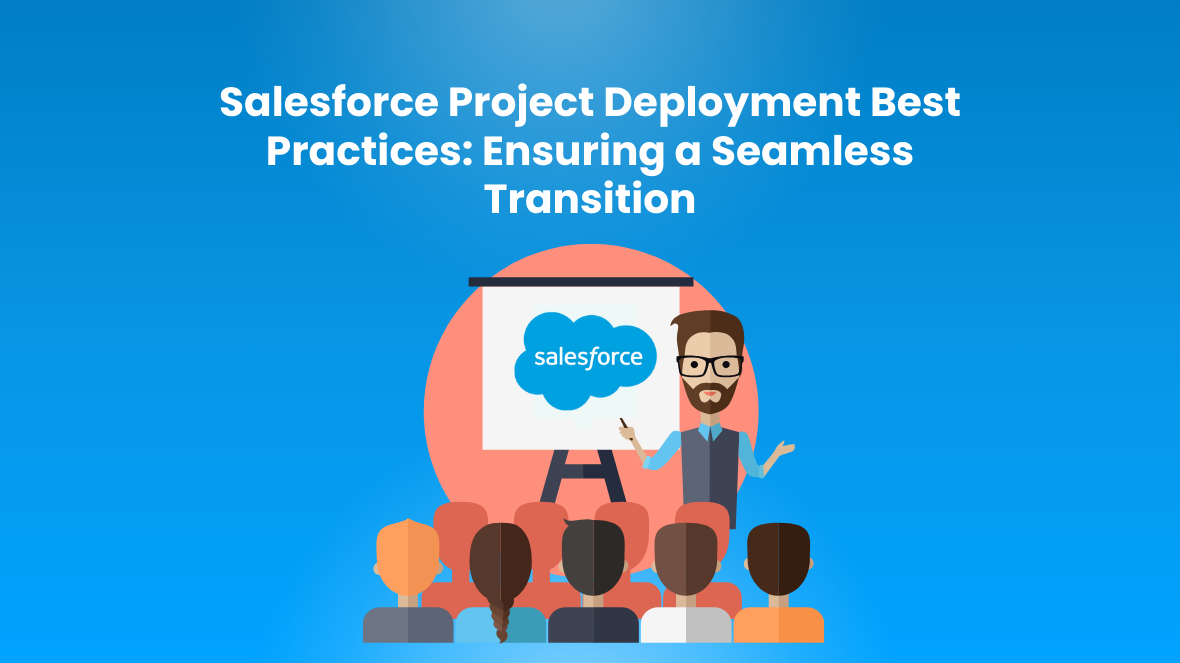Introduction:
When it comes to managing your Salesforce environment, ensuring smooth and seamless deployments is crucial. Whether you’re implementing new features, making changes to existing configurations, or updating data, following best practices can help you avoid service interruptions and maintain the integrity of your CRM system. In this blog, we’ll explore the top Salesforce deployment best practices that enable you to make changes without causing downtime or disruption. We will delve into the seamless and efficient deployment processes achieved through the strategic use of change sets in our Salesforce projects, highlighting the key advantages and best practices that have proven instrumental in delivering successful implementations.
1. Extensive Testing in Sandboxes:
One of the fundamental best practices for Salesforce deployment is to thoroughly test changes in sandbox environments. Salesforce offers different types of sandboxes, including Developer, Developer Pro, Partial, and Full, which allow you to replicate your production environment for testing. This is your first line of defence against errors and issues.
2. Change Sets for Controlled Deployment:
Salesforce Change Sets provide a controlled and efficient way to bundle configuration changes and deploy them from one environment to another, such as from sandbox to production. Ensure that your changes are bundled logically, and use validation steps to check for errors before deployment.
3. Plan for Off-Peak Hours:
Schedule deployments during off-peak hours to minimize the impact on users. Even though Salesforce is known for its availability, deploying during low-traffic times reduces the chances of service interruptions.
4. Robust Rollback Strategy:
Always have a well-defined rollback plan in place. While you aim for successful deployments, preparedness for potential issues is critical. A rollback strategy helps you quickly revert to the previous system state if needed.
5. Communication and Stakeholder Involvement:
Proactive communication with stakeholders and end-users is vital. Clearly communicate the purpose of the deployment, expected timelines, and instructions for reporting issues.
6. Data Backups:
Back up your data before deploying changes. Data loss can be catastrophic, so having a secure backup ensures you can recover if the need arises.
7. Performance Testing:
Perform load and performance testing in your sandbox to evaluate how changes will impact system performance and to ensure that the system can handle new configurations without degradation.
8. Monitor During Deployment:
Throughout the deployment process, keep a close eye on the system. A dedicated team should be ready to address any issues that may arise in real-time. Monitoring tools can help you identify and resolve problems quickly.
9. User Training and Adoption:
If the deployment involves changes in user processes, offer training and guidance to users ahead of time. Educated users are more likely to embrace new features and processes.
10. Post-Deployment Validation:
After the deployment is complete, validate that the changes have been applied correctly and that the system is functioning as expected. This final check ensures the success of the deployment.
Conclusion:
Salesforce deployments are an essential part of managing your CRM system effectively. By following these best practices, you can ensure that your Salesforce deployments are executed smoothly, with minimal service interruption, and a high level of user satisfaction. Planning, testing, and communication are key elements in achieving a seamless transition during deployments.
Incorporating these best practices into your Salesforce deployment strategy will help you maintain data integrity, improve user adoption, and ensure the continuous success of your Salesforce implementation.


